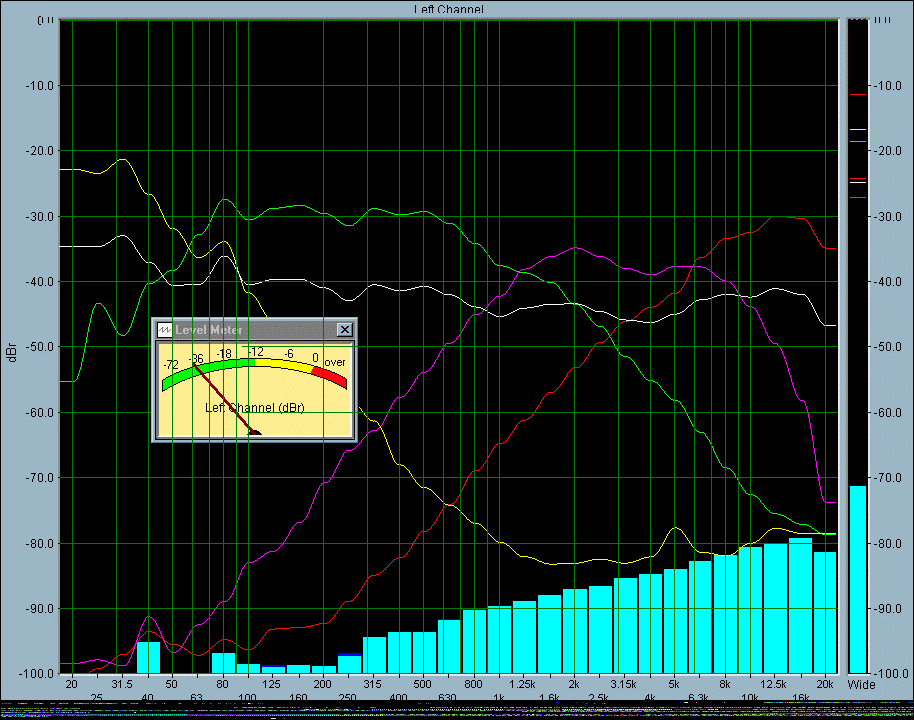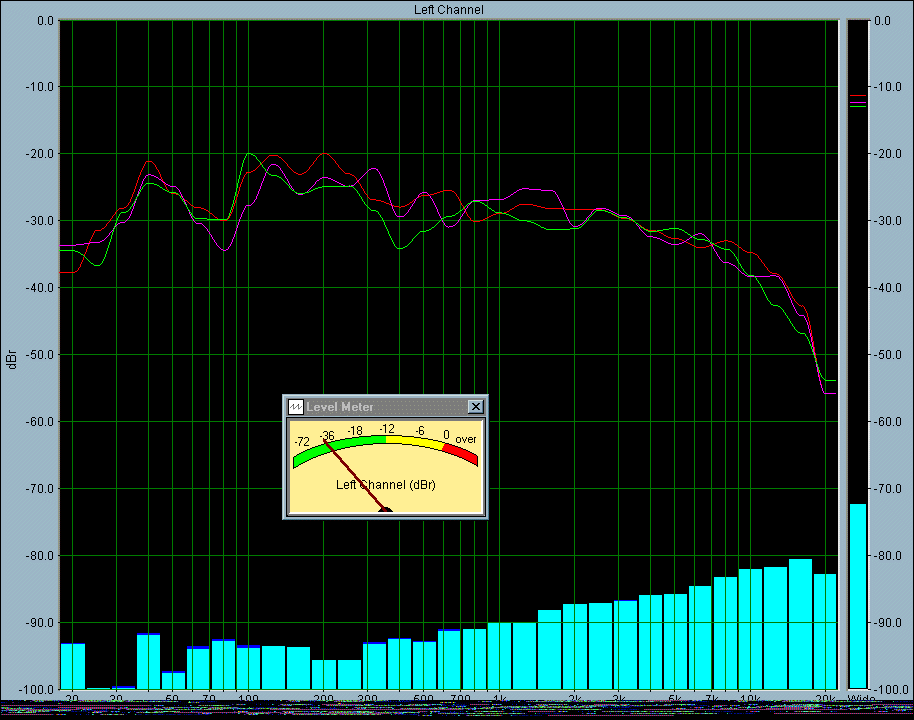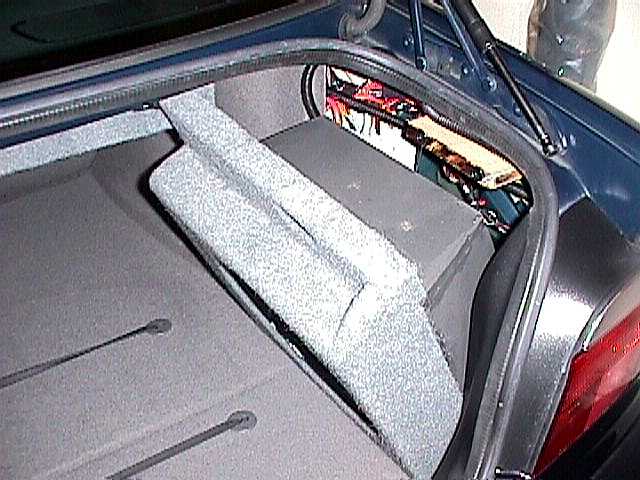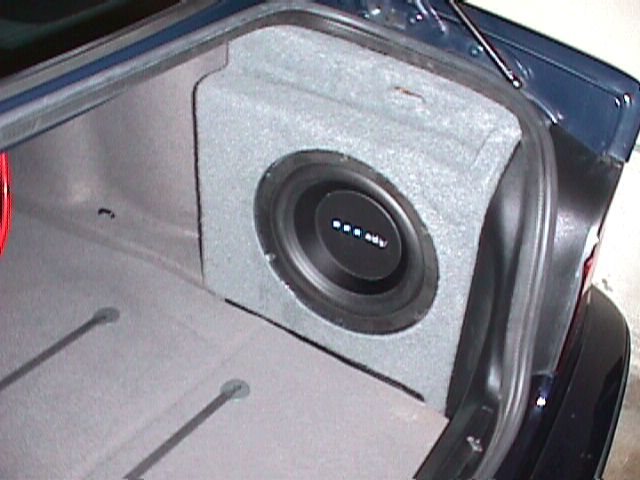
DSP output
Posted by JimL on May 11, 2001 at 14:01:26:
As many have discovered, upgrading a DSP equipped car is very hard, because the amp is integrated with the crossovers and equalizers. The DSP/amp takes S/PDIF digital in from the CD changer and full volume analog from the tuner/nav/TV, and puts out 14 channels (6 front, 4 rear, 4 sub) of bandpassed, amplified output.
I decided to find out how the DSP separated the frequencies amongst its various speakers. In the diagram below, you'll see how the BMW engineers split the audio spectrum amongst the various speakers: subwoofer (yellow), front bass (green), front mid (purple), front tweeter (red) and mathematical sum (white). The rears are similar to the fronts, but split between 2 speakers only.

DSP output
The above chart shows the intensity of the electrical signals going to the speakers, not the resulting sound pressure reaching your ears.
The chart below shows what happens after these signals are combined through the speakers and mixed in the cabin of the car. There are a few runs taken with the microphone placed in various positions.

Composite audio
response
One important thing to notice about the subwoofer signal...
For some reason, BMW engineers rolled off the sub around 40Hz!!! In other words, its bandpass is 10-40Hz. The fronts don't pick up the slack until 70-80Hz. As a result, you'll find a big hole in the 40-80Hz region when everything is combined.
IASCA has a test disk which exercises the system quite well to demonstrate its weaknesses. Track 30, I believe, contains a very bass agressive tune which has an opening 200-20Hz descending sweep, and sure enough, you can hear how the apparent loudness of the note dips in the middle. It doesn't take any fancy equipment to hear it.
Thus, if you choose to pick up the speaker level sub signal to send to an outboard amp, be aware of the limitations of it. ...i.e., it's rolled off at 40Hz, not something more sensible like 80Hz.
Per Bob Hazelwood's findings, I chose to remove my DSP completely and take the full spectrum analog into an A/D/S P840. The results are great and extremely clean.
Once you remove the DSP, the CD changer sends its signal to the tuner, where it's mixed with everything else. The big 17 pin connector on the tuner is where you pick up front/rear, left/right.
Here are the important pins:
1. LF+
2. RF+
3. LR+
6. RR+
8. LF-
11. RF-
12. LR-
14.
RR-
16. Antenna (for turning on your outboard amp)
I soldered 24ga twisted pair wires (Lucent Cat-6) directly to the back of these pins (i.e., on the back of the printed circuit board in the tuner) in order to gain access to them. It's actually quite easy if you have any competency with a soldering iron. Be careful to not damage the small capacitors that are adjacent to the pins.
Finally, I built a bespoke sub enclosure which fits into the trunk over the battery compartment.


Subwoofer with grill
removed.
I have absolutely no problem hearing (and sound graphs to prove it!) the sub through the factory holes in the rear deck. No additional cutting required.
Hope that helps!
/JimL